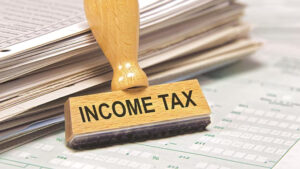Understanding TDS and TCS
Tax Deducted at Source (TDS) and Tax Collected at Source (TCS) are integral components of the Indian taxation system. They ensure timely tax collection and reduce tax evasion. However, many taxpayers face challenges in claiming credit for TDS and TCS due to complex rules and compliance requirements. To streamline this process, the Indian government introduced Section 12BAA, which simplifies the rules for availing TDS and TCS credit.

What is TDS?
Thank you for reading this post, don't forget to subscribe!
Tax Deducted at Source (TDS) is a mechanism under which tax is deducted by the payer at the time of making specific payments such as salary, professional fees, interest, rent, etc. The deducted amount is then deposited with the government on behalf of the payee.
What is TCS?
Tax Collected at Source (TCS) is the tax collected by the seller from the buyer at the time of sale of specified goods or services. The seller is responsible for depositing this tax with the government.
Introduction of Section 12BAA
Section 12BAA was introduced to ease the process of availing TDS and TCS credit by taxpayers. The key highlights of this provision are:
- Automated Credit Mechanism: TDS and TCS credits are now automatically reflected in the taxpayer’s account based on Form 26AS or the Annual Information Statement (AIS).
- Uniform Credit Availability: Earlier, taxpayers faced issues where credit was denied due to mismatches in reporting. With 12BAA, taxpayers can claim credit even if minor discrepancies exist.
- Simplified Reconciliation: The reconciliation process between the tax deducted/collected and the actual credit available has been simplified, reducing disputes with tax authorities.
- Time-Sensitive Credit: Taxpayers must ensure that TDS and TCS claims align with the relevant assessment year to avoid complications.
- Applicability to Different Taxpayers: Whether an individual, partnership firm, or corporate entity, all eligible taxpayers can benefit from this simplified approach.
How to Claim TDS and TCS Credit Under 12BAA
- Check Form 26AS and AIS: Before filing returns, verify TDS and TCS credits in Form 26AS and AIS available on the income tax portal.
- Ensure Correct PAN/TAN Details: Ensure that the deductor/collector has correctly reported your PAN while filing TDS/TCS returns.
- File ITR Accurately: While filing the Income Tax Return (ITR), correctly enter the TDS and TCS credit details to avoid rejection or delay in processing.
- Respond to Mismatches: In case of discrepancies, rectify errors through the tax portal or communicate with the deductor/collector for corrections.
Benefits of Section 12BAA
- Reduced Compliance Burden: Taxpayers no longer need to manually reconcile each credit entry.
- Minimized Errors and Disputes: Automated reflection of TDS/TCS reduces human errors.
- Faster Processing of Refunds: Since credit verification is streamlined, eligible refunds are processed more efficiently.
- Increased Transparency: Clear visibility of tax credits enhances compliance and trust in the tax system.
You May Also Like :
- Simplified Rules for TCS and TDS Credit – 12BAA
- Income Tax Bill 2025 Updates
- 10 Financial Transactions That Might Attract an Income Tax Notice
Conclusion
Section 12BAA simplifies the process of availing TDS and TCS credit, ensuring hassle-free tax compliance for businesses and individuals. By leveraging automated credit mechanisms and streamlined reconciliation, taxpayers can now claim their tax deductions and collections more efficiently. Staying updated with these simplified rules will help ensure seamless tax filing and compliance with Indian tax laws.
For the latest updates on taxation and compliance, stay connected with our blog!


